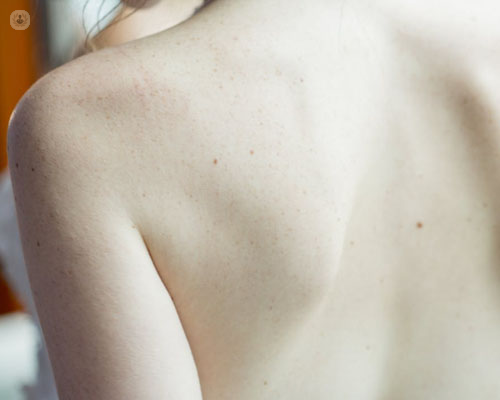

What is shoulder arthroscopy?
Shoulder arthroscopy is a minimally-invasive technique that allows access to and treatment of many injuries and diseases of the various structures that make up the shoulder joint. The joint is accessed through two or three small incisions of less than one centimetre.
Arthroscopy has become the technique of choice for shoulder pathologies, enabling the treatment of difficult-to-access structures of the shoulder by providing a complete view of the inside.

Why is it performed?
Shoulder arthroscopy is used to treat shoulder problems in people with shoulder pain or limited movement who have not improved with medical and physiotherapy treatment. In the past, shoulder injuries required more complex surgeries and recovery periods were longer.
Specifically, shoulder arthroscopy is used for:
- Rotator cuff tear
- Shoulder dislocation
- Traumatic injuries: glenoid fractures, acromioclavicular dislocation and soft tissue injuries.
What does it involve?
Shoulder arthroscopy is performed in the operating room, with the person in a semi-seated position or on their side, placing the arm to be operated on in a traction and positioning device. The specialist will create two holes and introduce the arthoscopy, in order to see the inside of the shoulder clearly. Once the surgery is complete, the specialist will seal up the holes and apply a compression bandage and a sling.
In addition to sedation, local anaesthetic will be applied to numb the nerves that go to the arm. This makes the postoperative period more comfortable and less painful compared to conventional shoulder surgery. The surgery itself takes between 30 and 90 minutes, depending on the condition being treated.
Normally, after the operation, you will spend one night in the hospital and be discharged the next day. You will also be given some instructions on how to take care of your shoulder to ensure a full recovery.
Preparing for shoulder arthroscopy
To prepare for the procedure:
- you must inform the specialist of any medication you are taking
- a preoperative study will be performed based on blood count, biochemistry, a chest X-ray and ECG
You must not eat or drink in the eight hours before surgery
Post-operative care
You are likely to feel discomfort during the first few days after the operation, as well as swelling. However, this will soon subside with the help of medication recommended by the surgeon.
You must also wear a sling to immobilise and rest the operated arm for two to four weeks. You should nonetheless carry out some small exercises such as elbow flexions and extensions, and move the fingers. The specialist will explain how to do this.
It is important to avoid the incisions getting wet until the stitches are removed, which will be 5-10 days after the operation. Once the stitches have been removed, rehabilitation will be necessary, and this can last up to eight weeks. As the rehabilitation progresses you will be able to do more activities, such as driving, and, after two to four months, more strenuous physical exercise.
Alternatives to this treatment
The alternative to shoulder arthroscopy is an open surgical procedure. However, this involves greater joint invasion and a more complicated postoperative period, with greater pain and longer recovery time.
